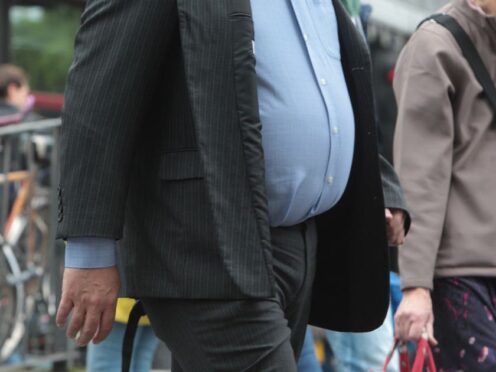The decline in coronary heart disease rates among people under 60 in the UK has “stalled”, with researchers saying this could be down to rising obesity rates and a lack of exercise.
Preventing ill health should go beyond anti-smoking messages and reducing high blood pressure to include weight loss and encouraging exercise, they suggested.
It comes after a study found the overall fall in the number of people with coronary heart disease over the last 20 years has been offset by an increase in other heart problems, such as valve diseases and blood clots.
The study, published in The BMJ, included 1.65 million people registered with a GP who were newly diagnosed with at least one cardiovascular disease from 2000 to 2019.
Researchers assessed the trends of 10 conditions, including stroke, heart failure, atrial fibrillation and flutter, heart block, aortic aneurysm, acute coronary syndrome, aortic stenosis, chronic ischaemic heart disease, peripheral arterial disease, and venous thromboembolism, which includes deep vein thrombosis and pulmonary embolism.
The study found the rates of all 10 conditions decreased by about 19% between 2000 and 2019, although the rates of coronary heart disease and stroke declined by 30%.
Further analysis found the decline in coronary heart disease was mainly among patients older than 60 and the decline among younger age groups had “stalled”.
Researchers suggested the trend has been observed in other high income countries and could be down to rising obesity rates, a lack of exercise and type 2 diabetes in young adults.
“The stalled decline suggests prevention approaches may need to be expanded beyond antismoking legislation, blood pressure control, and lipid lowering interventions to include the promotion of physical activity, weight control, and use of new treatments shown to reduce cardiovascular risk in people with type 2 diabetes,” they added.

Researchers said that while rates of heart disease are “generally low” in those under 60, identifying people at risk at a young age and intervening before problems begin could reduce premature deaths and “have important economic implications”.
The study also pointed to “an increasing number of diagnoses of cardiac arrhythmias, valve disease, and thromboembolic diseases”.
A “socioeconomic gradient” was observed for “almost every” condition investigated, researchers said.
There were higher rates in the North of England, with rates of aortic aneurysms and aortic stenosis about 30% higher than London.
The study was funded by The Research Foundation – Flanders, the European Society of Cardiology, and the British Heart Foundation (BHF).
Dr Sonya Babu-Narayan, associate medical director at BHF and consultant cardiologist said: “We know that by 2019, decades of progress to save the lives of people with heart conditions had stalled. And now in the wake of a pandemic, things have only got worse.
“This study makes clear that many different types of cardiovascular condition need to be addressed if we are to reignite progress towards reducing the impact of cardiovascular disease.
“The link between heart health and wealth is well-established. Cardiovascular disease kills one in four people in the UK so it’s vital that prevention, early diagnosis, treatment and care reaches those who need it, when they need it, wherever they live.
“And, by supercharging cardiovascular science with sufficient funding, we can continue to make breakthroughs that will help more of us to live in good health for longer.”
